4
ConnectED: Bridging Minds Building Communities
ConnectED: Bridging Minds Building Communities
Content
Growing up today can be tough. Young people face stress, confusion, and big changes—and often feel unprepared. That’s where ConnectEd comes in.
This playlist helps youth workers and educators support young people with the skills they really need—like managing stress, solving problems, and working well with others. Through fun, hands-on activities and simple tools, young people learn how to build confidence, stay strong during hard times, and connect with others.
With a focus on learning how to learn, building community, and caring for mental health, ConnectEd helps young people feel ready for whatever comes next. Whether in a classroom, online, or in a youth group, these activities are easy to use and full of real-life value.
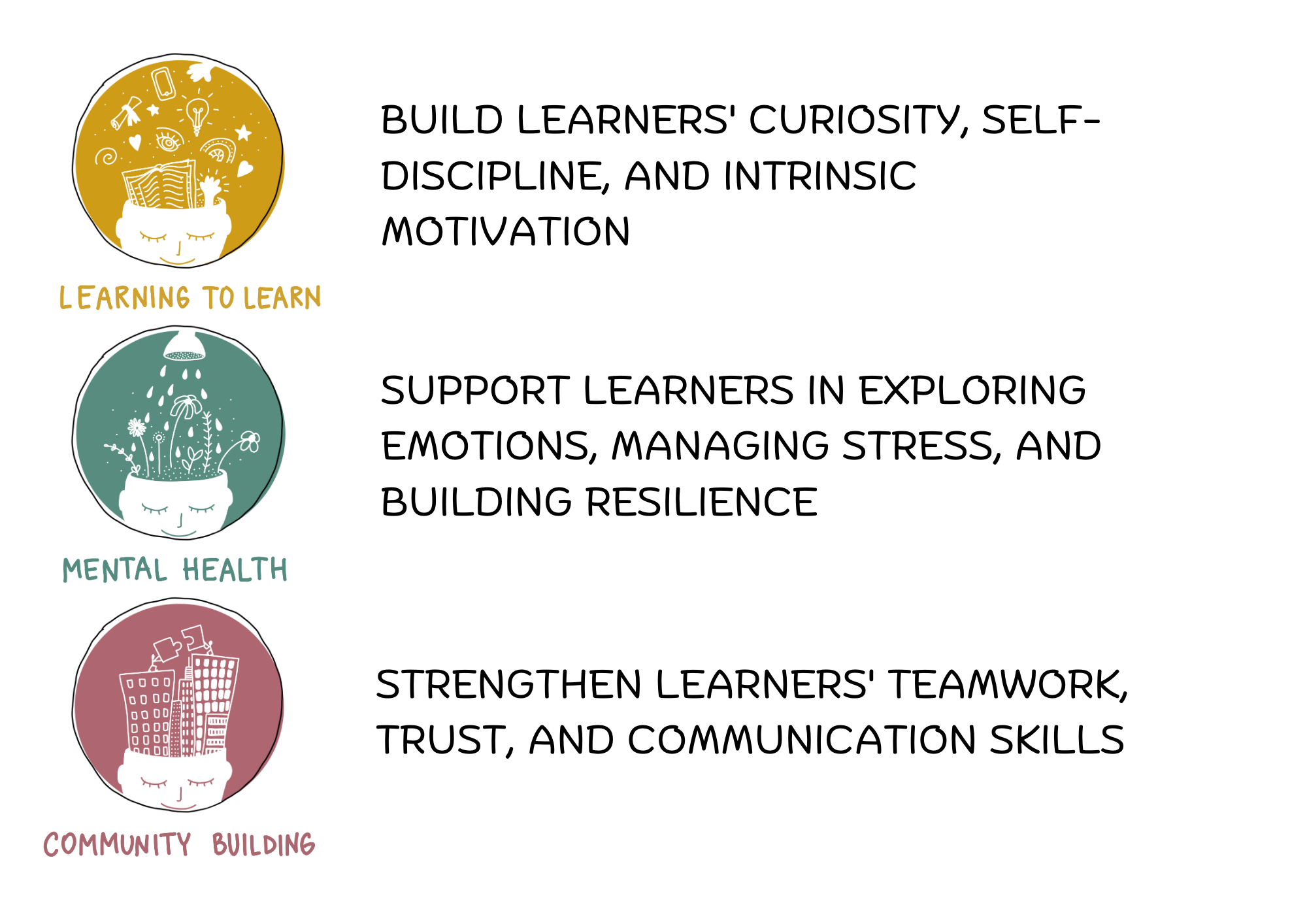
If you’ve ever seen a young person struggling and wished you could do more—ConnectEd gives you the tools to help. Offer them the support they deserve. A safe space. A helping hand. A moment that could change everything.
About the ConnectEd Project
The ConnectEd methodology was developed as part of the ConnectED: Bridging Minds, Building Communities project, a collaborative initiative aimed at strengthening the capacity of youth workers and educators. The ConnectEd project is implemented by TiPovej! from Slovenia, BACKSLASH from Spain, Libero from Serbia, and Connect International from Belgium.

Activities to complete
Complete the following activities, earn badges and you will see your playlist progress updated
Content
Welcome to this engaging activity for youth workers and educators!
We’re about to explore the fascinating world of "learning to learn." Think of it as helping young people unlock their brain’s full potential—like discovering a hidden superpower! Our goal is to support you in guiding young learners to understand how they can learn best and make learning not just useful, but fun and engaging.
In this activity, we’ll focus on practical strategies for supporting young people to reflect on their learning experiences, identify what methods work best for them, and develop a love for learning that extends beyond formal education. This is an opportunity to deepen your understanding of self-directed learning and empower young learners to take control of their educational journey.
By the end of the activity, you’ll feel more confident in your ability to support young people in their learning process, helping them gain essential skills and competencies that are often missing in traditional educational settings. This activity will also give you tools to encourage them to regularly assess their progress and adjust their strategies as needed.
With this activity, we aim to:
- Deepen your understanding of self-directed learning and how it can benefit young people.
- Help you develop practical skills to support young people in learning how to learn.
- Guide young people in exploring which learning methods work best for them and why.
- Build the habit of regularly reviewing progress and making necessary adjustments to improve learning outcomes.
- Support young people in acquiring important competencies that may be missing in traditional education, such as critical thinking, problem-solving, and adaptability.
Ready to start? Let’s jump into our first exercise: “The best and the worst learning experience”!
Exercise 1: The best and the worst learning experience
WHAT IS LEARNING…
Learning is a vital part of life. From the moment we are born—perhaps even before—we start learning. It helps us grow, adapt, and improve. However, learning is not a simple process. It is not something we do step by step in a straight line. Instead, it is a journey filled with ups and downs, changes in direction, and moments of inspiration.
Learning is more than just memorizing facts or following instructions. It involves gaining skills, knowledge, and the right mindset. Sometimes, learning happens unexpectedly through life experiences, interactions, and challenges. It is not always planned, and people learn in different ways depending on their interests and surroundings. There are three main fields of learning: formal, non-formal, and informal—different in their settings and demands but interconnected in their role of making learners knowledgeable.
There are different ways people learn and why they do it (Entwistle, 1981).

Learning is deeply influenced by motivation, environment, and personal experiences. It is also connected to emotions and social interactions. Learning is not just an individual activity—it often happens in groups, where people share ideas and support each other (Taylor & Kloosterman, 2012):
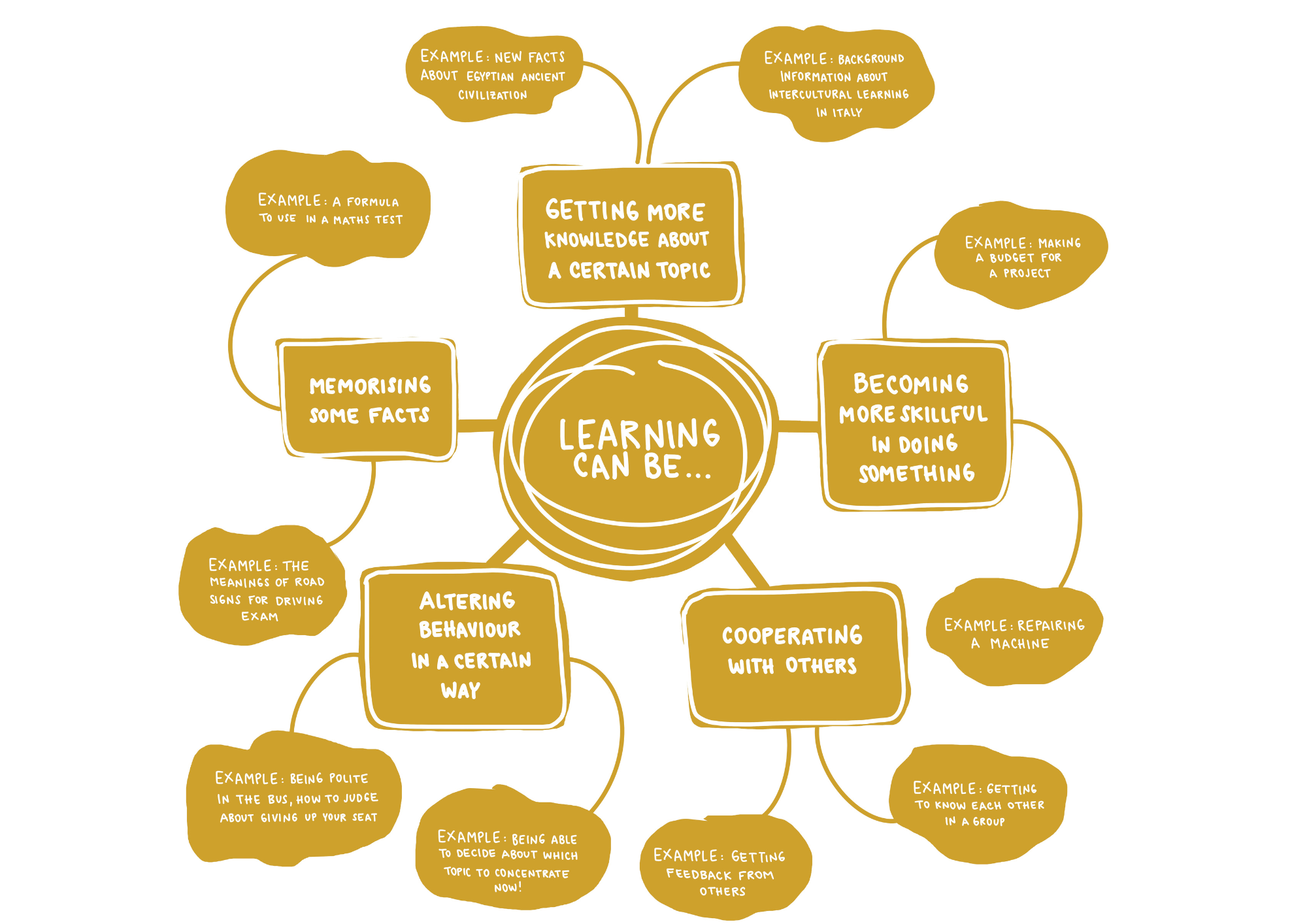
The Science of Learning
Learning is a complex, multidimensional process that involves cognitive, emotional, and behavioral mechanisms. Modern neuroscience and psychology have provided deeper insights into how learning occurs at a biological and psychological level.
Cognitive Processes in Learning: How the Brain Learns
Did you know that every time a young person learns something new, their brain literally changes? The more they engage with a concept, the stronger their brain pathways become:
- When someone learns something new, their brain forms and strengthens neural connections. This process, known as neuroplasticity, is the foundation of all learning. The more we practice something, the easier it becomes to recall and apply it. Watch this video to see
- Prefrontal Cortex is part of the brain responsible for reasoning, problem-solving, and decision-making. It’s critical when young people are asked to engage in higher-level thinking, like analyzing a situation or planning a project. Watch this video to learn more about Prefrontal Cortex (PFC), a part of our brain that helps us make decisions, plan things, and control our actions. It's also important for understanding who we are. This video explains what the PFC does, why it's good at these tasks, and how different parts of it help with decision-making and our sense of self.
- Hippocampus is an area of the brain that is key for memory formation and knowledge retention. Without a well-functioning hippocampus, it would be hard to remember what was learned just days ago! Wondering “What happens when you remove the hippocampus?” watch TED-ED video by Sam Kean.
Emotions & Motivation: The Power of a Positive Mindset
Young people are motivated not just by the material they learn, but by the emotional environment in which they learn. Positive emotions like curiosity and confidence can significantly enhance the learning experience, while negative emotions like anxiety can be major barriers:
- When young people feel curious or confident, they’re more likely to be engaged and invested in learning. As a youth worker, creating an emotionally safe space where learners feel comfortable asking questions and making mistakes is crucial for their growth. This video explains the importance of positive emotions in learning “The Importance of Emotions in Learning.”
- Additionally, the next video will help you in generating and regulating positive emotions, as well as how they contribute to our overall emotional and cognitive experience, or "sense of mind" - Igniting Positive Emotions: The Prefrontal Cortex and Anterior Cingulate Cortex - Sense of Mind.Igniting Positive Emotions:
- On the flip side, anxiety, fear, and stress can interfere with cognitive processes. For example, a study by c found that high stress can impair memory and concentration. As a youth worker, it’s vital to monitor and reduce stressors in your learning environment.
- According to psychologist Carol Dweck’s Growth Mindset theory (2007), students who believe their intelligence can grow through effort (as opposed to believing it’s fixed) show greater motivation and resilience. Encourage youth to embrace challenges and view mistakes as opportunities to learn. This video will help you in Developing a Growth Mindset with Carol Dweck. Carol Dweck uses the word "yet" to emphasize the idea that abilities and intelligence can be developed over time. Instead of seeing challenges or failures as signs of permanent limitations, the word "yet" encourages a growth mindset—the belief that skills and knowledge can improve with effort, practice, and persistence. For example, if a student says, "I can't do this," adding "yet" turns it into, "I can't do this yet," implying that with time and effort, they will be able to. This small shift in language fosters resilience, motivation, and a willingness to keep learning.
- Youth who set goals, monitor their progress, and adapt their strategies tend to succeed more in the long run. A study by Zimmerman (2002) highlighted that self-regulated learners are more likely to engage deeply with the material and achieve better outcomes.
Practical Applications
Several well-known learning techniques have been developed and refined based on cognitive science research. These techniques have proven to be highly effective when it comes to learning to learn.
1. The Feynman Technique
Named after the physicist Richard Feynman, this technique involves simplifying complex concepts and explaining them as if teaching someone else. This method is grounded in the idea that the best way to understand something is to articulate it clearly in your own words. The steps include:
- Choose a concept you want to learn.
- Teach it to someone else or pretend to teach it (even to an imaginary audience).
- Identify gaps in your explanation and go back to the material to fill them.
- Simplify and refine your explanation until you can explain it in simple, clear terms (Feynman, 1985).
Watch the video “The Feynman Technique” to learn how to present a concept in a simple language and test our understanding of it. This technique works because explaining something forces you to understand it at a deeper level, often revealing areas of misunderstanding or incomplete knowledge.
2. Spaced Repetition
Earlier in this methodology, we briefly discussed spaced repetition. Spaced repetition is a technique that involves reviewing information at increasing intervals over time. This method takes advantage of the brain's tendency to forget information, which can be counteracted by reviewing material just before forgetting occurs (Ebbinghaus, 1885). The spacing effect is particularly powerful because it enhances long-term retention.
Research supports the efficacy of spaced repetition in improving memory retention over the long term. This is why systems like Anki or Quizlet, which use algorithms to optimize review intervals, are popular tools among learners (Cepeda et al., 2006). Spaced repetition has been shown to be far more effective than cramming all the material at once, as it consolidates memory and strengthens neural pathways (Roediger & Butler, 2011).
3. Active Recall
Active recall involves actively testing yourself on the material you're trying to learn, rather than passively reviewing notes. This technique encourages retrieval of information from memory, which strengthens neural connections and improves long-term retention. Unlike passive study methods such as rereading, active recall leads to more robust learning (Roediger & Butler, 2011).
One common way to implement active recall is through flashcards, quizzes, or practice tests. Every time information is retrieved from memory, the neural pathways associated with that information are reinforced, leading to stronger retention over time (Tharp & Gallimore, 1991).
The Role of Reflection in Learning
Reflection plays a critical role in effective learning. By taking the time to assess what strategies worked and what didn’t during a study session, learners can adjust their techniques to improve future learning outcomes (Zimmerman, 2002). This is a key component of metacognition: not only understanding what works, but also why it works and when to apply it.
Through consistent reflection on the learning process, learners can identify their strengths and weaknesses, recognize patterns, and adjust their strategies accordingly. For instance, switching from passive reading to active recall or adopting spaced repetition can make a significant difference in learning efficiency.
For learning we need to internalize following attitudes:
- Self-motivation and creativity in learning – Don’t give up when facing challenges!
- An internal drive for personal growth and change.
- A positive mindset towards learning.
- Willingness to support and motivate others in their learning.
Exercise 2: The River of Learning
The aim of The River of Learning is to look at and reflect on how and what you learnt till now. Look back over your lives and think about times or events where you really felt you learnt something. The result of this reflection should end up on the paper using the metaphor of a river.
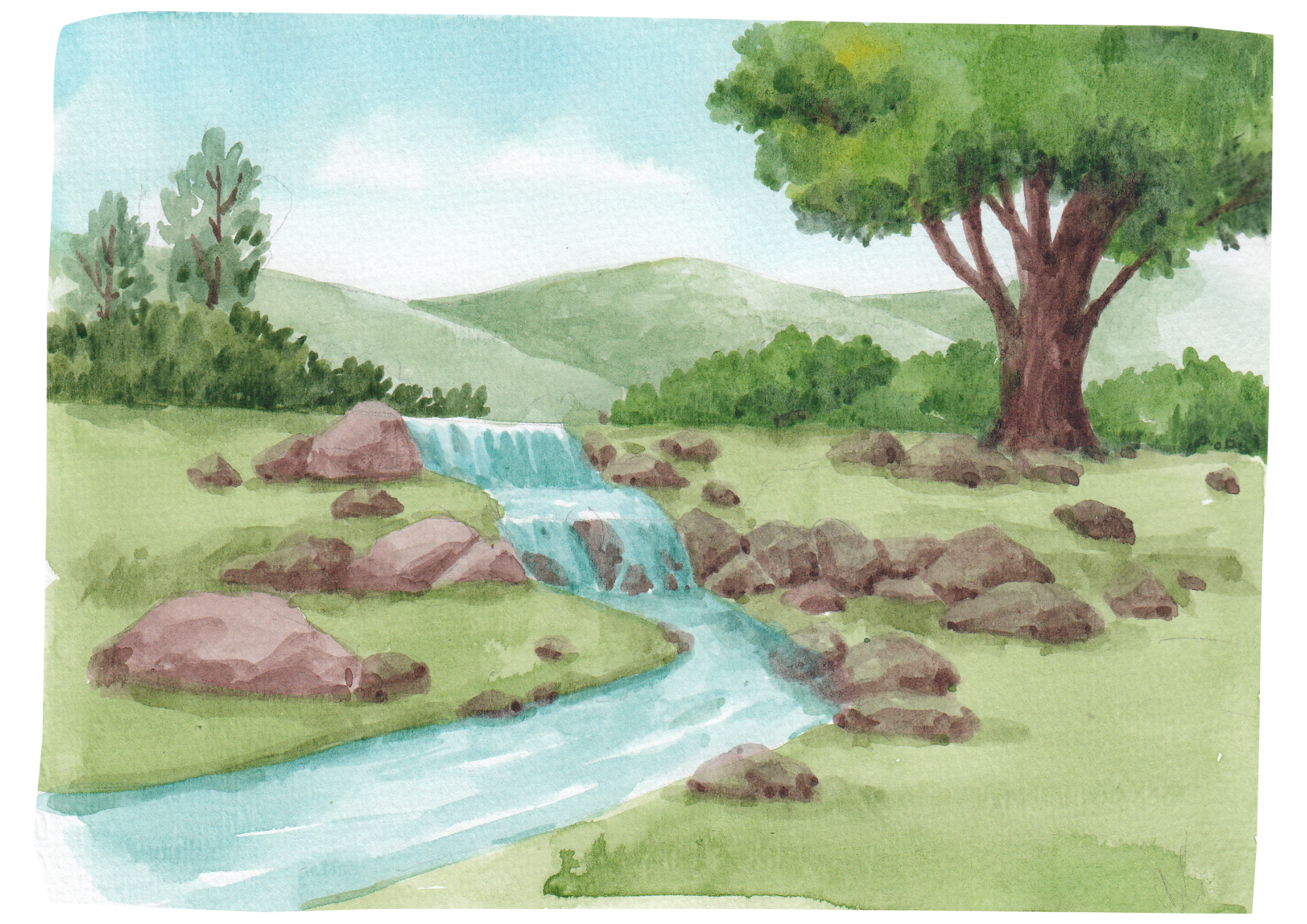
Take your time and reflect:
- How was it to use the metaphor for your learning?
- What was challenging in finding your most important learning moments?
- Was there anything surprising in your personal reflection?
Self-directed learning means learners are in charge of their own journey. They set their goals, pick how they want to learn, and go at their own pace. Us, teachers, youth workers and educators? We’re more like coaches or guides—there to support them when they need help, but they take the lead.
Think of learning like martial arts. 💥 Yeah, really! The illustration below shows how building learning skills helps young people grow emotionally, mentally, and socially. As a youth worker, your support and encouragement can make a big difference—helping learners stay focused, build confidence, and keep growing through every challenge.

THE LEARNING PIT
The Learning Pit is a concept developed by James Nottingham to describe the challenges and struggles that come with deep learning and critical thinking. It’s often used in education to encourage learners to embrace difficulty as a natural part of the learning process (2017). Watch the video below where James Nottingham explains the learning pit. Educators often use visuals of a pit to illustrate this journey, showing that struggle is a natural and essential part of learning.
LEARNING TO LEARN
Learning to learn is not just about mastering strategies for acquiring knowledge or understanding why certain techniques work better than others; it’s also about exploring the deeper reasons why we learn in the first place. This approach encourages learners to reflect not only on the how—the methods they use to learn—but also the why—the underlying motivations and purposes behind learning. Understanding the reasons for learning is just as important as knowing the best techniques. Whether it’s for personal growth, career advancement, intellectual curiosity, or the desire to contribute to society, our reasons for learning shape our approach and influence our success. Metacognition, or the ability to think about and regulate one’s learning processes, plays a central role here, as it empowers learners to become aware of how their motivations impact their strategies and outcomes. By reflecting on both the techniques that help them learn and the deeper motivations behind their learning, learners can develop a more meaningful and intentional approach to education. This deeper understanding not only enhances learning efficiency but also makes the process more engaging and aligned with personal values, ensuring that learning is not just about acquiring knowledge but about achieving something meaningful in the learner’s life.
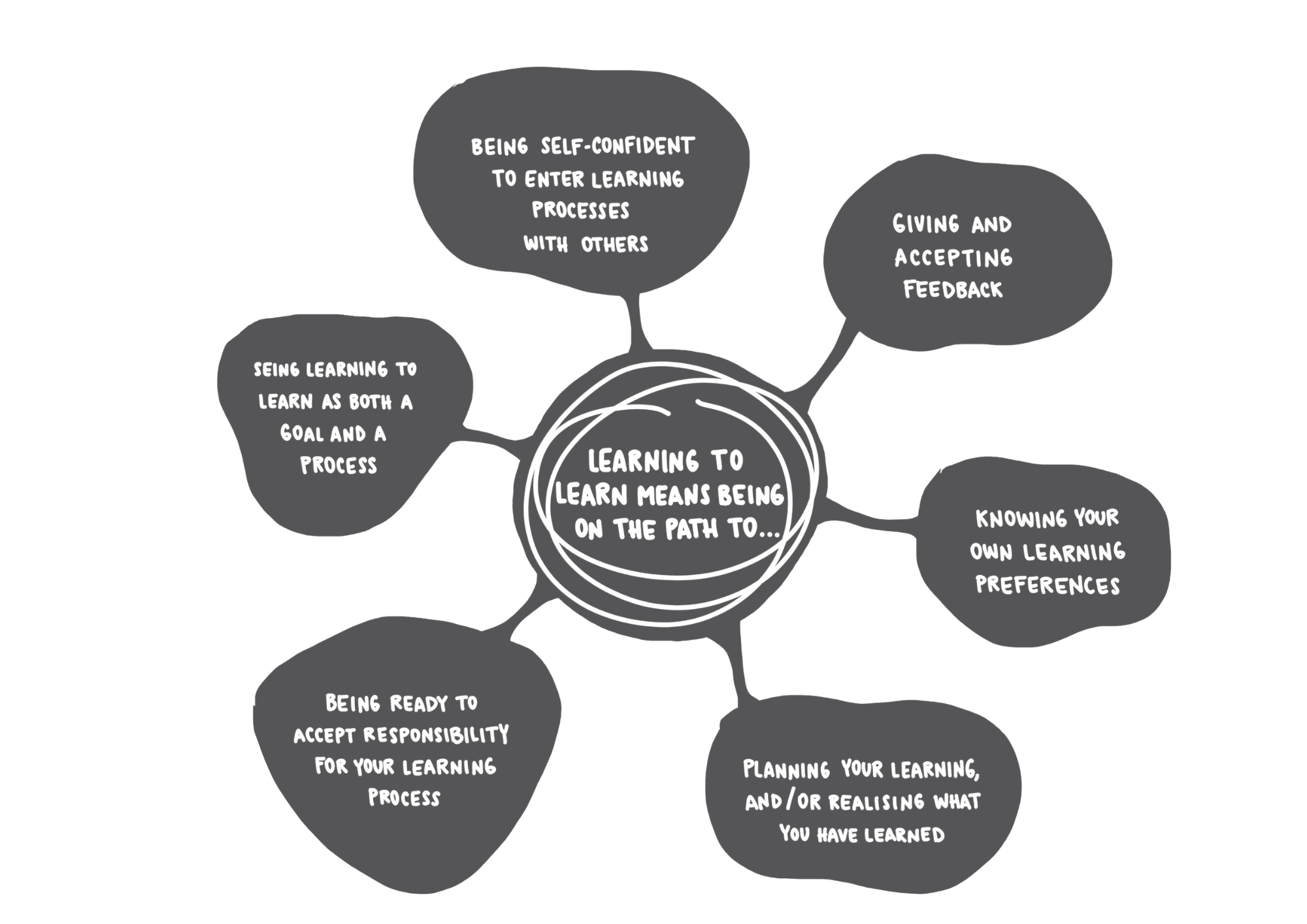
Competence Learning to learn
Learning to learn is one of the competences strongly needed in today’s knowledge society for personal fulfilment, social inclusion, active citizenship, and employment. Learning to learn requires a learner who takes responsibility for both "what" and "how" they want to learn.
The learning to learn competence includes:
- Self-directed learning
- Creativity
- Seeking meaning in learning
- Teamwork
- Presentation skills
- Taking initiative and responsibility
The essence lies in adopting an attitude that serves as an internal compass for navigating and exploring learning to learn:
- A deep commitment to supporting learners on their journey.
- Genuine trust that learners know their own needs best.
- Empathy and a clear relationship with learners.
- Awareness of the lifelong learning framework in which learning takes place.
The learning to learn can be illustrated as:
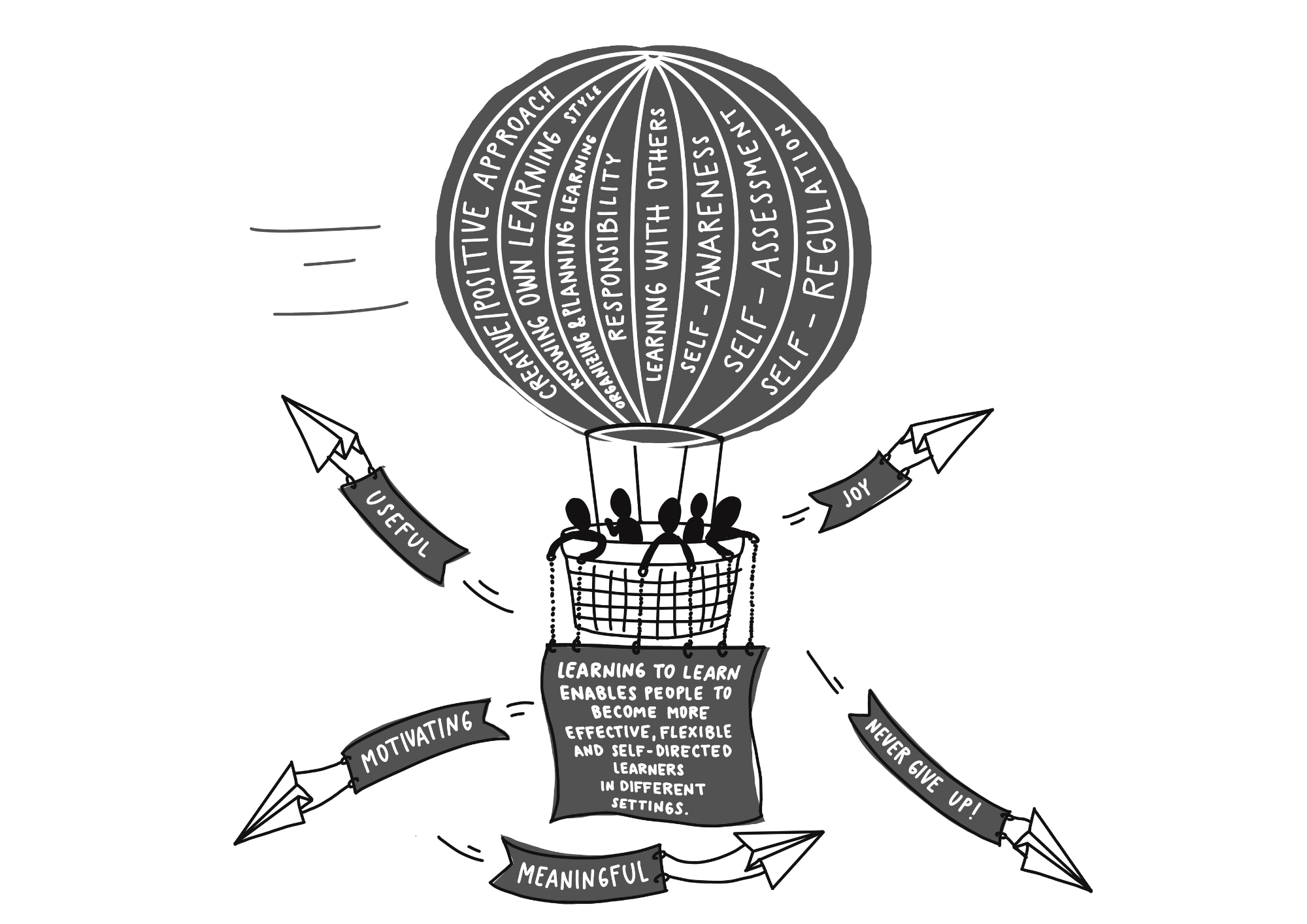
Exercise 3: Using learning to learn
- What are the three most important topics/experiences that you can use daily for yourself to be a better (self-directed) learner?
Share your answers below to complete the task 3 to earn the badge of this activityThis video below is good because it shows a simple way to quickly learn new skills by focusing on what matters most and practicing for just 20 hours. It connects to "learning to learn" by teaching how to break big tasks into smaller steps and stay motivated to improve.
For additional tools and methods you are invited to use HANDBOOK for facilitators: Learning to learn in practice.
The competence of learning to learn is essential for embracing the concept of lifelong learning and understanding that learning is neither simple nor it is just one thing.

Get activity badge
LEARNING TO LEARN Get this badge
This badge is for youth workers and educators who took time to explore how learning really works—not just for others, but for themselves too.
It’s all about diving into the world of “learning to learn”—understanding how we grow, reflect, and adapt as lifelong learners. This badge shows that you’ve explored powerful ways to support young people on their learning journeys and that you’re committed to growing alongside them.
Learning isn’t just about books or classrooms—it happens in conversations, challenges, and everyday experiences. This badge proves you’ve taken a thoughtful look at how learning works, what helps it happen, and how to pass that on in a meaningful way.
What you did to earn this badge:
- Reflected on your best and toughest learning moments (yep, even the messy ones!)
- Explored how emotions, mindset, and motivation influence how people learn
- Used creative tools like “The River of Learning” to trace your own journey
- Practiced techniques like spaced repetition, and active recallLearned how to guide young people to take charge of their learning with confidence
- Thought deeply about why learning matters—and how to make it stick
- Took part in challenges and exercises that helped you grow your educator superpowers
Your tasks were reviewed by the activity organiser, and once you completed everything with reflection and intention, you earned this badge!
This badge shows you understand the power of learning to learn—and you're ready to support others in becoming curious, capable, and self-directed learners.
You have to finish all tasks to get the badge
Tasks
Task no.1
Evidence verified by: one activity organiser
Task 1: The best and the worst learning experience.
Write down two pluses and two minuses of the best and worst learning experience you ever had.
Share your answer.
Task no.2
Evidence verified by: one activity organiser
Task 2: River of Learning
Look back over your lives and think about times or events where you really felt you learnt something. The result of this reflection should end up on the paper using the metaphor of a river. Share your liver of learning with us (attach the picture) and your reflections:
- How was it to use the metaphor for your learning?
- What was challenging in finding your most important learning moments?
- Was there anything surprising in your personal reflection?
Task no.3
Evidence verified by: one activity organiser
Task 3: Using Learning to learn.
Write down what are the three most important topics/experiences that you can use daily for yourself to be a better (self-directed) learner?
Task no.4
Evidence verified by: one activity organiser
Task 4: Reflection
Write down what gift did you receive going through this learning to learn activity? (A word/or a sentence)
Skills
ESCO
#able to use learning strategies
Activities: 3
Started: 6
Completed playlist: 0
Time to complete: 6 hours
Share:
Organisers
TiPovej!
Badge issuer recognized with
Awero not-for-profit organisation manages this platform and develops it together with leading educational organisations. The European Union's programme Erasmus+ granted co-funding for building the first version of this platform. Contact support@awero.org.
Platform
Change to another language:

